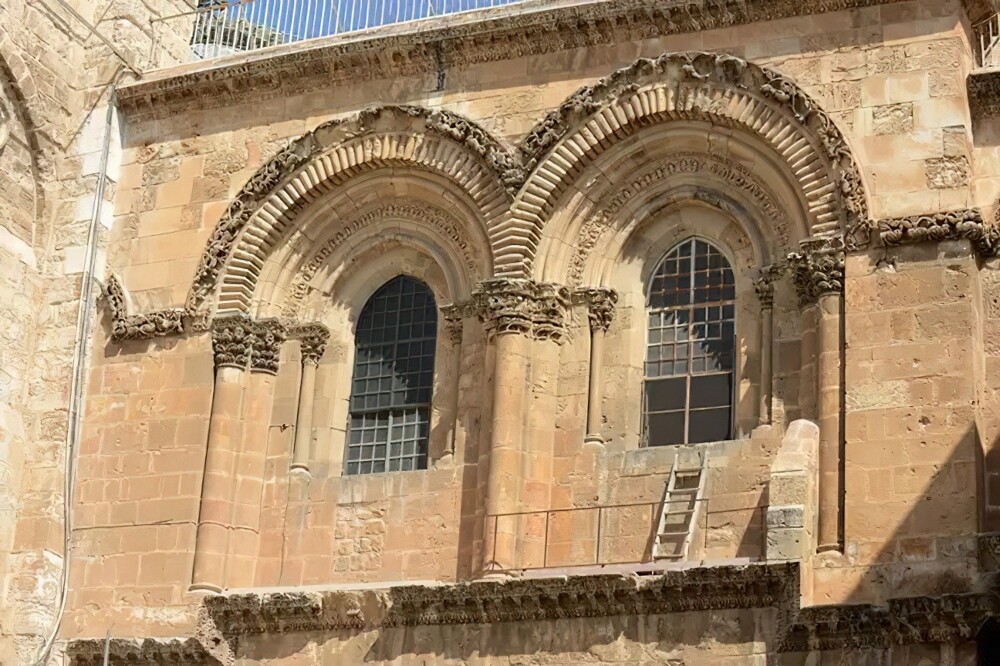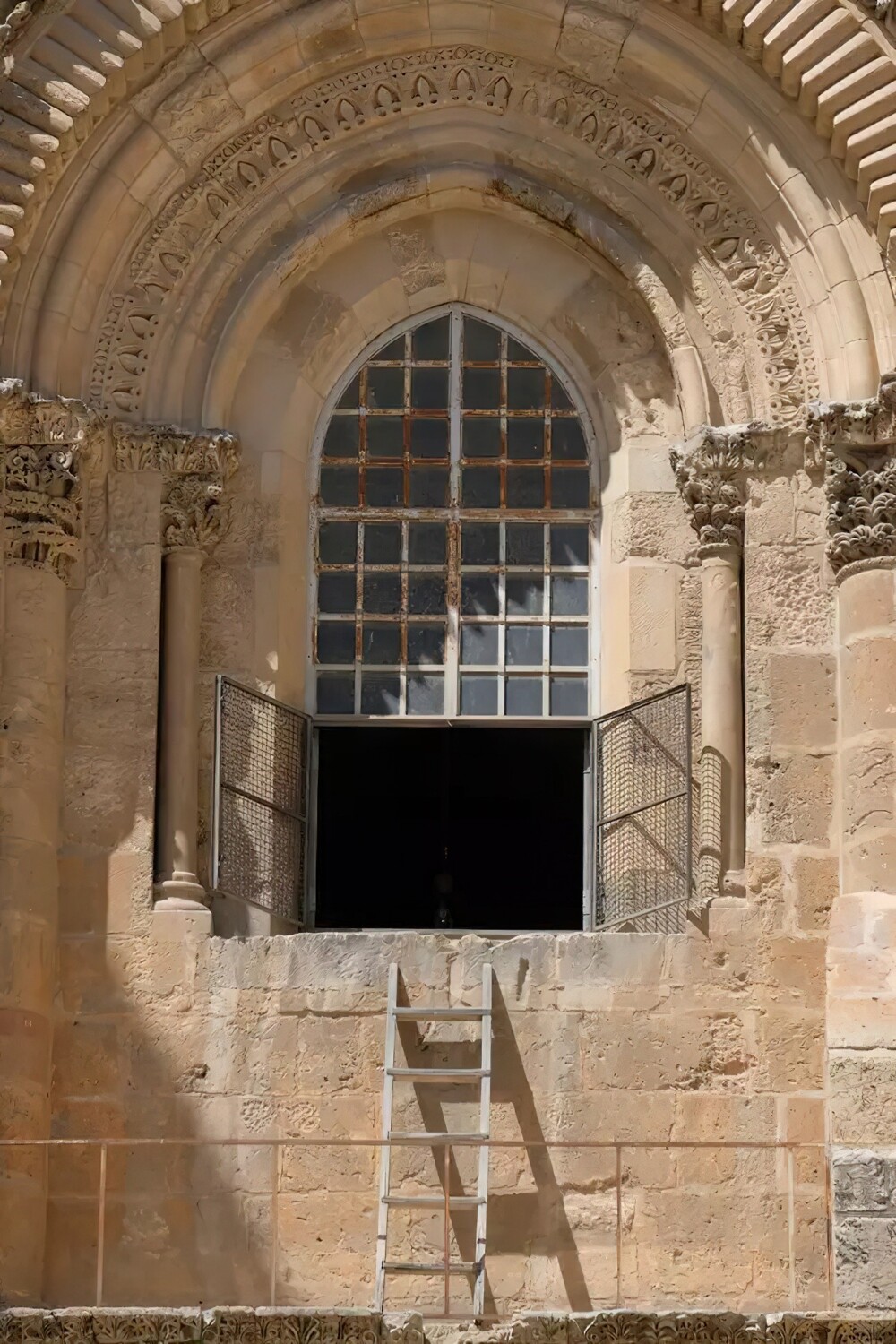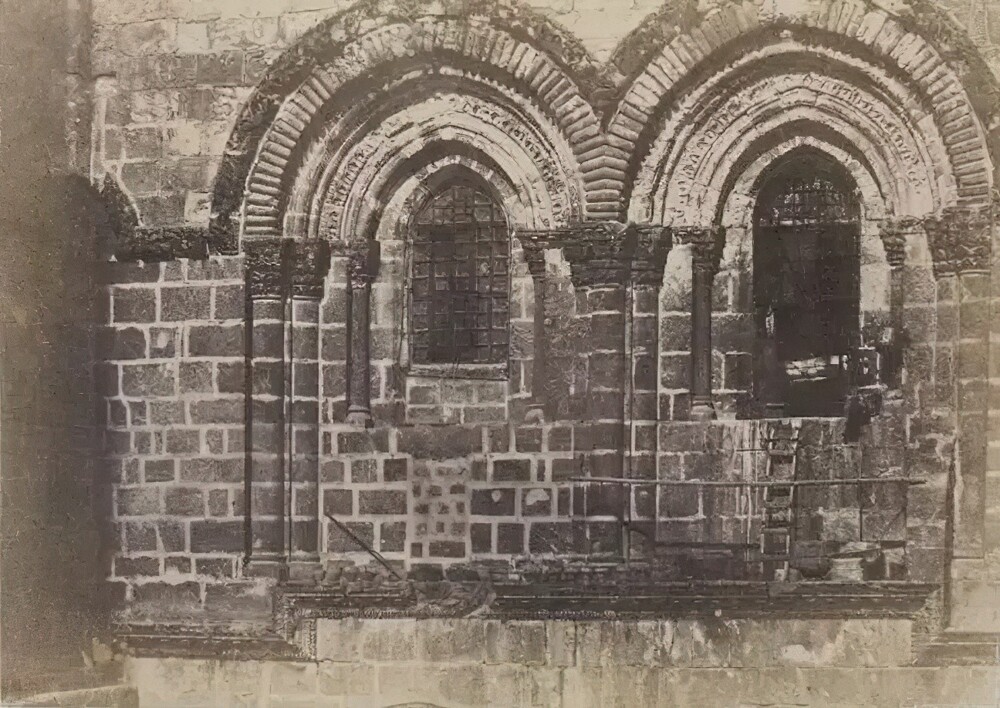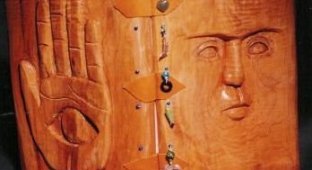How a wooden staircase became a symbol of the status quo in the Church of the Holy Sepulcher in Jerusalem (4 photos)
In one of the holiest places for Christians, the Church of the Sepulcher of the Lord in Jerusalem, for 266 years now stands on the cornice of the second floor wooden ladder leaning against the window. Looks like she's been forgotten there by accident. 
In fact, this ladder is extremely important: if it stands on its own place, then the six Christian denominations that own the temple are in world and observe the rule of the "Status Quo of the Holy Land".
The status quo rule was proclaimed in 1757 by the Sultan Osman III. He issued a decree on the equality of all six Christian denominations related to the temple, in order to stop the endless conflicts between them. At that time it was forbidden to change anything in the temple - move or repair - without the unanimous approval of all participants.
Now various parts of the temple are owned by the Catholic church, Greek Orthodox Church, Armenian Apostolic Church, Syriac Orthodox Church, Ethiopian Orthodox Church and Coptic Orthodox Church.
In essence, the Status Quo rule has become a way to protect the sacred. place, saving it for all Christians. And an ordinary wooden staircase has become a symbol of compliance with this rule - do not change anything and do not move, leave everything exactly as it was. Her (and her predecessors) can be seen in old engravings, drawings, photographs. It is not removed from facade of the building for the third century. 
The temple is of great importance for Christians around the world, and people made pilgrimages to it since the fourth century. Then Christianity ceased to be united and split into various branches, each of which believed that their branch was the only correct one. Conflicts between confessions occurred constantly and often reached bloodshed.
Relative peace has been preserved since 1757 thanks to official document that consolidated the "Status Quo". Sometimes they flare up quarrels and even fights (most recently, in 2008, the monks had a fight over a chair moved by 20 cm and ended up in someone else's territory, and 11 people ended up in the hospital as a result), but still basically the rule works.
The main thing, as you now understand, is not to move the ladder. In all senses. 
Where did the staircase under the window come from, no one can say for sure Maybe. Either the carpenter forgot it there, or the Armenians put it (windowsill, on which it relies belongs to the Armenian Apostolic Church).
According to one version, they did not have the opportunity freely enter and exit the temple, so they raised here food and water on ropes. Otherwise, the Turks had to pay for entry and exit duty. The ladder was needed so that the monks could get out cornice during religious holidays. They even say that this On the eaves, vegetables and herbs were grown in pots. 
This photo from the 1800s shows that the staircase has been there for centuries.
They say that in 1997 someone decided to laugh at "stupid" rule and the stairs disappeared. She was replaced and fenced off the place lattice. Then, in 2009, during the renovation of the building, the stairs moved to the left window - this was required in order to attach scaffolding outside. And then, of course, they returned to their place.
There's something about it! The rule to be observed, and the symbol that clearly reminds of it























